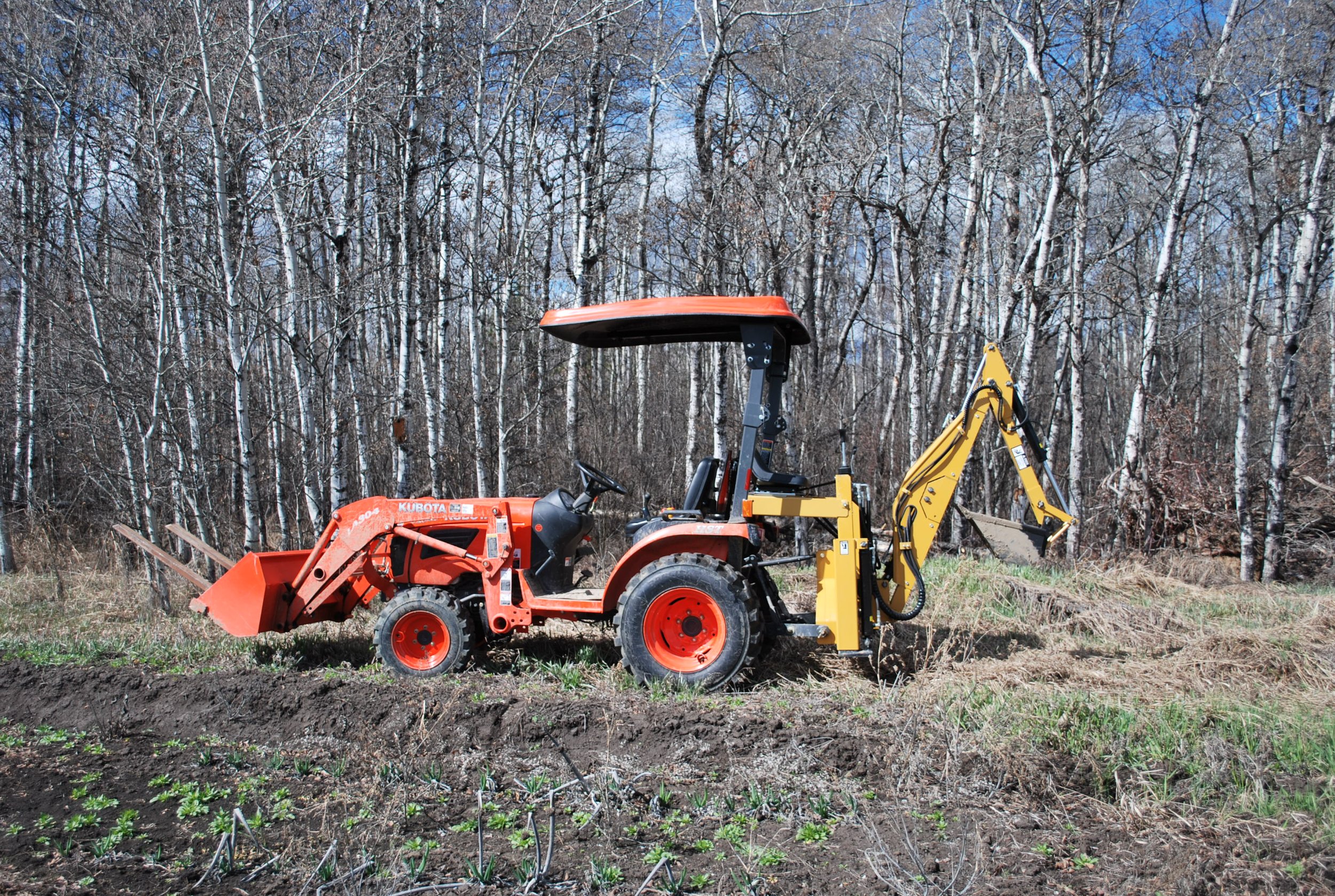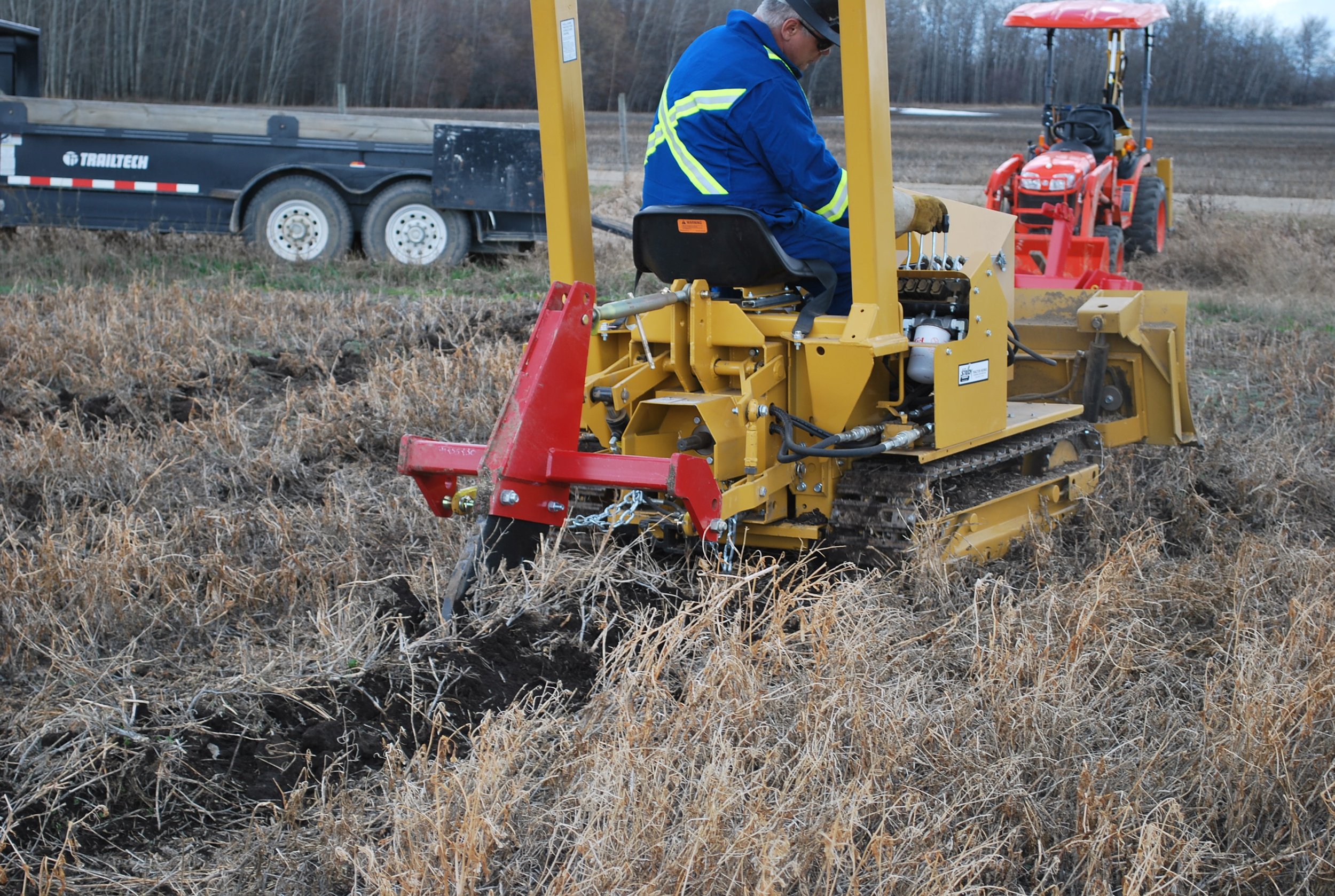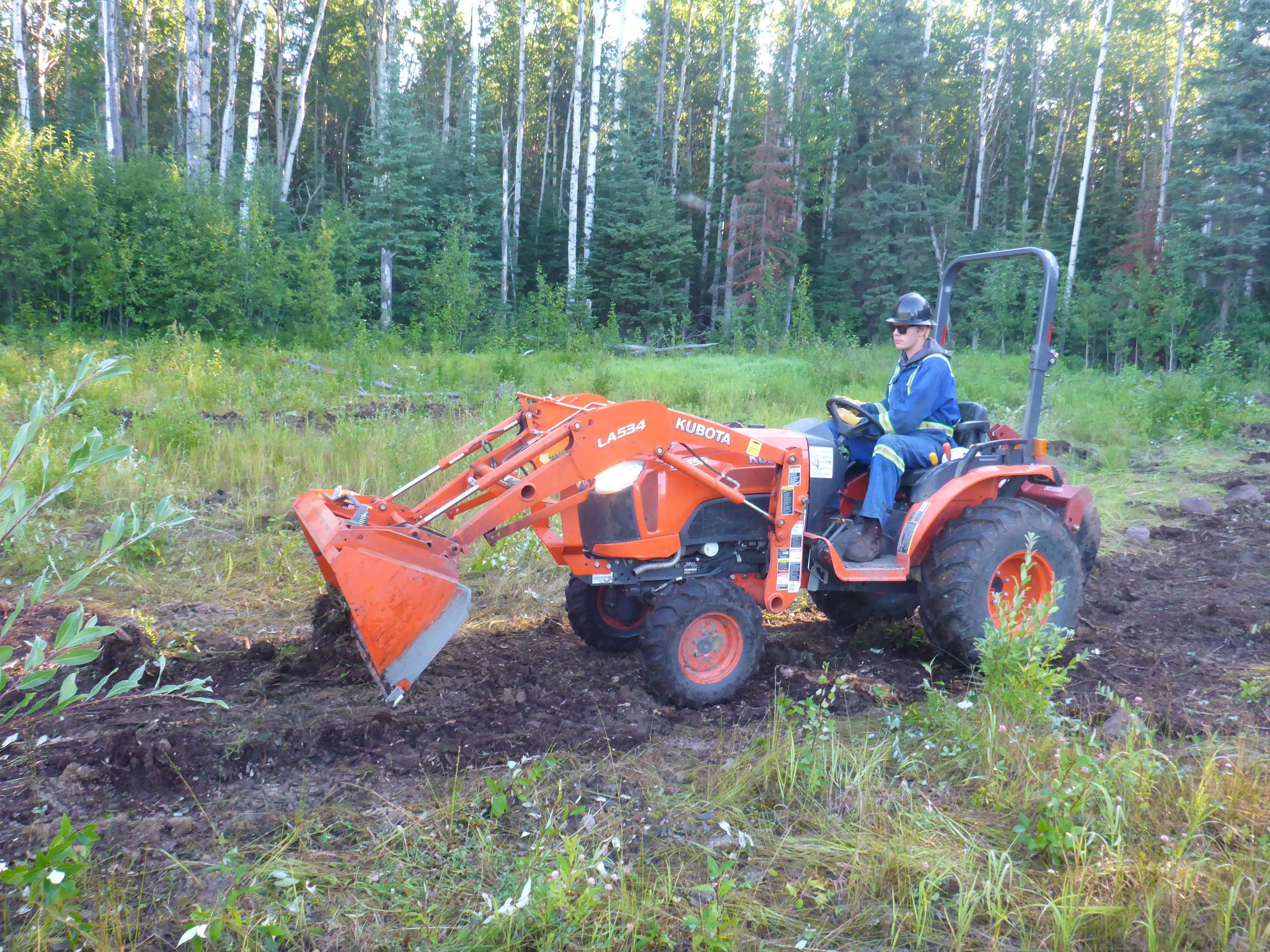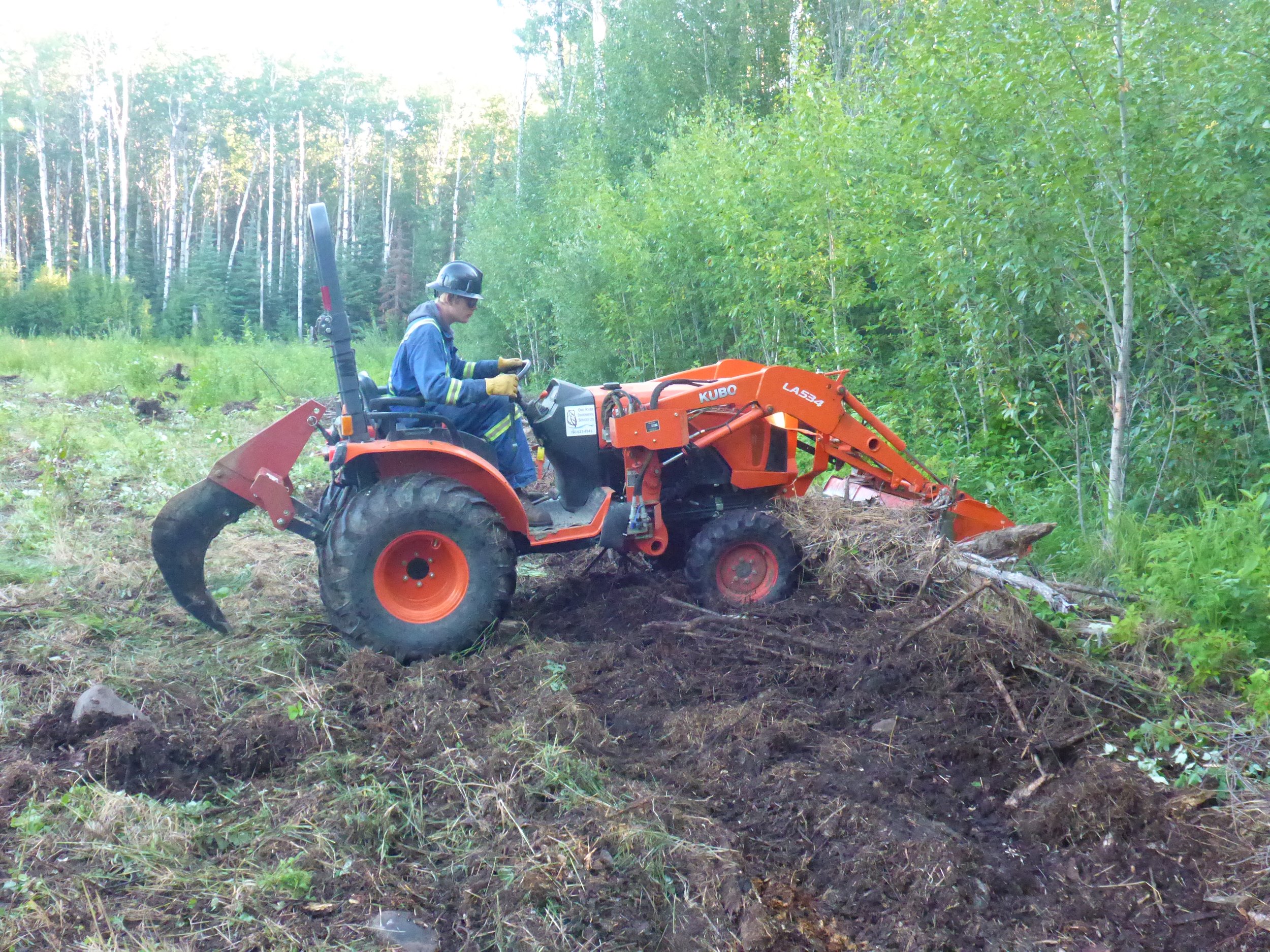Mulch Preparation Techniques
Conventional well restoration utilizes layers of mulched woody debris to help encourage regrowth of disturbed sites. However, applying mulch in thick layers can result in the opposite effect, supressing future plant growth.
Several mulch layer preparation methods to prevent the suppression of regrowth are demonstrated at the Boreal Wetland Centre. They include:
Ploughing: Using a plow to cut through 35 to 45cm of mulch.
Most successful vegetation regrowth. Relatively quick when compared to other methods. Creates windrows that can prevent soil erosion on sloped locations.
Mounding: Using a hoe to build small mounds through mulch layer.
Second most successful vegetation regrowth. Slower process that requires more technical knowledge than ploughing.
Blading: Using a CAT to build ridges in the mulch.
Third most successful vegetation regrowth. Fastest process of the four.
Augering: Using an augur to drill into mulch.
Least successful vegetation regrowth. Similar speed to mounding. Less technical than mounding; however, does have additional safety concerns from rotating implement.
Mini CAT equipment transportable via helicopter
Accessibility Issues
Although mulch preparation techniques can help restoration on disturbed sites, there are equipment accessibility challenges. Wells are typically installed in the winter with access being constructed while the ground is frozen. Unfortunately, restoration cannot typically be done at the same time as establishment as the survival of planted species can be challenging in winter (frozen soils). In addition, there are also visibility issues as snow layers can hide trenches and holes leading to them being missed in reclamation efforts. Therefore, most restoration occurs in the summer when access is limited (wet ground conditions).
Access roads constructed in the winter are often only accessible during the winter. In other cases, constructing road access into areas can be impractical due to being remote when compared to other wells in need of restoration. This is costly and time consuming for companies.
This access issue can be addressed by helicoptering materials and modular equipment onto site for mulch preparation. This method is highly mobile and results in a smaller carbon footprint to road construction. This method also reduces the cost of access and allows for minor disturbances to be touched up. In addition, helicoptering portable equipment is the ideal method to address challenging sites that require extra time and resources to properly restore. Due to its flexibility, this method is applicable for both upland and wetland environments.
Though useful where access is poor, this method is not typically used on a wider scale due to the substantial area that wells cover. In cases where wells are easy to access or revegetate, conventional access methods are typically used.
Wiide shot of Owl River area being treated with mini cat equipment








